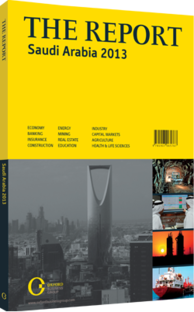Sovereign wealth: The country’s wealth funds now include more diverse investments
With the Kingdom’s coffers enjoying the fruits of high hydrocarbons prices, the state is looking to ensure that today’s good fortune is passed on to future generations. Traditionally managed by the Saudi Arabian Monetary Agency (SAMA) and the Ministry of Finance, the country’s stewardship of these wealth funds is now being expanded to include new, more diverse national investment vehicles. While Saudi Arabia’s first official oil-dedicated sovereign wealth fund (SWF), the Sanabil Al Saudia fund, was launched in March 2009, other investment vehicles performing much the same function of a SWF have been around for decades in the form of the Ministry of Finance’s Public Investment Fund (PIF) and the SAMA’s Foreign Holdings (FH) fund.
Operated as an independently managed fund within the central bank, SAMA FH has primarily invested surplus oil revenues in low-risk assets such as sovereign debt instruments. Its assets were valued at $532.8bn as of January 2013 and split primarily among cash deposits, fixed income and equities while avoiding private equity stakes and emerging markets, according to the US-based think tank SWF Institute. This placed it as the fourth-highest-valued SWF fund in the world, behind Norway’s Government Pension Fund, with a global worth of $664.3bn, the UAE’s Abu Dhabi Investment Authority (worth $627bn) and China’s State Administration of Foreign Exchange (worth $567.9bn).
Changing Roles
Initially a tool to channel oil wealth into national economic development, the scope of the PIF’s mandate has been expanded over the decades since its establishment in 1971. After being directed to hold equity positions in joint-stock ventures within the domestic economy starting in 1974, PIF took over full management and ownership of a newly created Sanabil in 2008. Holding $5.3bn in assets consisting primarily of stocks, bonds, real estate, foreign currencies and commodities as of January 2013, the new fund employs a long-term investment strategy comparable to most traditional SWFs. The fund has been active on the domestic market and is involved in a diverse array of activities, including oil and gas, downstream metal processing, fertiliser and chemical production, water and electricity projects, aircraft procurement, railway projects and tourist accommodation. In this capacity, the fund has also established a host of new companies, including: the Saudi Rail Road Company, the National Company for Unified Procurement of Medicine, Al Elm Information Security Company, the Saudi Stock Exchange, the Saudi Electronic Info Exchange Company, the Tatweer Education Holding Company, the Saudi Agricultural and Livestock Investment Company, the Saudi Company for Technological Development and Investment, and Tadawul Real Estate.
New Investments
Shortly after the creation of Sabila, the government announced the formation of a second new investment vehicle, the Hassana Investment Company. Owned by the General Organisation for Social Insurance (GOSI), the new firm allows the fund greater independence from SAMA in asset management, in particular across international stock markets. In addition to international markets, HIC is also active in local stock markets. GOSI and PIF are currently the two-largest institutional investors in the Saudi stock market, with the former holding stakes in virtually every blue-chip Saudi firm, including the largest listed lender Al Rajhi Bank, the Saudi Telecom Company and the Saudi Arabian Fertiliser Company.
Both funds kept a low profile after inception as their respective management teams decided upon the investment strategies to employ. Sanabil stepped out of the shadows in January 2013, when it acquired a 13.7% stake in the Riyadh-based power and water company ACWA Power. The company issued 89.5m new shares to Sanabil and the Saudi Public Pension Agency, which also took a 5.7% share. Apart from press releases announcing Hassana would be primarily targeting investments in real estate and commercial projects and both foreign and domestic stock markets, the new fund has revealed little about its strategy for managing the substantial GOSI assets, estimated at $400bn by Zawaya.
You have reached the limit of premium articles you can view for free.
Choose from the options below to purchase print or digital editions of our Reports. You can also purchase a website subscription giving you unlimited access to all of our Reports online for 12 months.
If you have already purchased this Report or have a website subscription, please login to continue.

